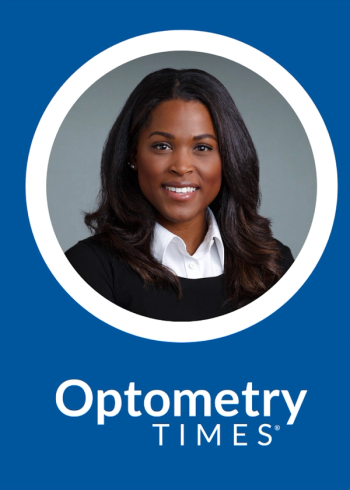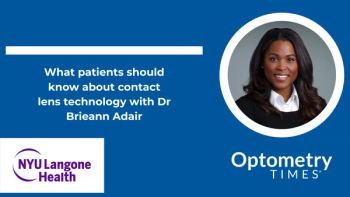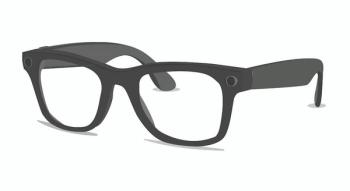
- Vol. 11 No.7
- Volume 11
- Issue 7
Offer more comfort to contact lens wearers
Contact lens wear is a tremendous portion of many optometry practices. Many patients come to ODs because of their ability to provide comfortable vision with
Unfortunately, without successfully providing
Discomfort leads to dropout
ODs have seen firsthand the positive outcomes these new modalities have had on patients’ lens-wearing experience. Even with the availability of new contact lens technologies, some patients will still discontinue contact lens wear. There are several reasons for this, including ocular redness, decreased visual acuity, and even cost of the contact lenses. Interestingly, the most commonly-cited reason that someone will discontinue contact lens wear is discomfort.3,4
From a clinical perspective, ODs know who is wearing lenses but determining those who have discontinued lens wear is a more difficult exercise.
Some patients will tell their ODs about their comfort challenges and seek help, but most are silent sufferers because they attribute discomfort as a necessary evil of wearing contact lenses. These patients may seek other professional opinions, or they could simply come in to their next eye exam wearing their glasses, uninterested in continuing contact lens wear.
Related:
I went through a self-realization several years ago when I asked patients in my practice to grade their
I found that even my seemingly comfortable contact lens wearing patients were experiencing a significant drop in comfort toward the end of the day. This is when ODs typically consider intervening with new contact lens technologies to positively influence patients’ end-of-day comfort.
I think all practitioners should embrace the newest contact lens technologies, including material science and optical designs. Contact lens innovation provides our patients with a remarkable improvement in wearing experience. I believe ODs have the opportunity to reduce the number of contact lens dropouts, but we need to be proactive in the way we ask questions in the exam room and, ultimately, offer patients the highest-quality contact lens designs and optical properties that manufacturers have to offer.
Related:
Ocular surface and comfort
Unfortunately, only a certain level of comfort can be obtained by optimizing lens designs. ODs need to understand and appreciate the effects of the ocular surface and how it can influence contact lens wear. A healthy ocular surface will not guarantee a successful wearing experience but will maximize the chances of it occurring.
With the ocular surface, critical clinical consideration should be made to the health of the lid margins, conjunctiva, cornea, tear film, and all glands involved in producing the tear film.
Lid margins that become serrated over time can be a sign of chronic lid margin disease, resulting in poor lid dynamics. Excessive bacterial overpopulation can lead to signs of collarettes at the base of the lashes. Other signs include folliculitis, meibomian gland capping, and lid margin hyperemia. This can ultimately alter the quality of the meibum, affecting the tear film dynamics.5 Blepharitis has been shown to be a risk factor for comfortable lens wear, too.6
The lid wiper area is the small region just posterior to the line of Marx on the superior lid margin that provides much of the wiping capacity of the upper lid over the ocular surface. The lid wiper area can become inflamed and will absorb vital dyes, including fluorescein and lissamine green. This is called lid wiper epitheliopathy (LWE) and has been associated with contact lens discomfort.7-9Related:
Inflammation has also been associated with contact lens discomfort. With advancing technologies, the ability to measure ocular surface inflammatory markers has improved. It has been recently demonstrated that elevated levels of leukotriene B4 are associated with symptomatic contact lens wear.10-12
Nutrition can influence ocular surface health and contact lens discomfort. Patients randomized to receive oral omega-3 supplementation showed improvements in contact lens comfort and a reduction in ocular surface inflammatory markers.13
A number of strategies may improve contact lens comfort through improving ocular surface health. Fortunately, there is significant information on ocular surface treatment strategies that have been found to help contact lens wearers have a more comfortable wearing experience.
Here, we will review several strategies that have been shown positive responses in studies to treat the ocular surface in order to improve patients’ contact lens comfort.
Also by Dr. Brujic:
Thermal pulsation
Appropriate meibomian gland health is critical for a healthy ocular surface. The meibomian glands produce meibum that form the outer layer of the tear film, preventing premature evaporation of the tear film’s aqueous layer. Research has shown that meibomian gland dysfunction (MGD) can cause a reduction in contact lens comfort.14,15
A single 12-minute thermal pulsation treatment has demonstrated significant improvements in meibomian secretion, tear film parameters (including MMP-9 levels), and patient symptoms measured by the Standardized Patient Evaluation of Eye Dryness (SPEED) questionnaire. 16-18
Recently, researchers looked into the influence of MGD and contact lens discomfort in contact lens wearers with MGD and dry eye symptoms. Participants were randomized to a single thermal pulsation treatment and compared to a control group that received no treatment.
The treated group significantly improved both signs and symptoms associated with contact lens discomfort and increased comfortable contact lens wear time by four hours. The study followed these patients for three months, and the treatment effect was sustained for that time frame.19Related:
Moist heat compress
A clinical study at the University of Alabama at Birmingham School of Opometry found that subjects using Bruder moist heat compress had significantly improved meibomian gland scores and experienced steeper declines in their overall eye discomfort assessment scores.
This was a four-week, single-center, three-arm, randomized, open-label clinical trial in subjects diagnosed with contact lens-induced dry eye (CLIDE) using the Contact Lens Dry Eye Questionnaire long form (CLDEQ). Fifty-one subjects were randomized to one of three treatment groups:
• Application of the compress once a day
• Application of the compress twice a day
• Warm washcloth application twice a day
A statistically significant increase in mean hours of comfortable wear time was found in subjects who used the compress compared to those using a washcloth. No statistically significant improvement in comfortable wear time was found between subjects using the compress twice daily versus once daily.20Related:
Dry eye blepharitis syndrome
Drs. James Rynerson and Henry Perry published a theory on the underlying cause of dry eye termed “dry eye blepharitis syndrome” (DEBS).21
In their paper, they discuss bacteria-producing biofilms over the lid margin surface as the major contributor to inflammation and dry eye. As these bacterial populations within a biofilm increase above certain threshold populations, they undergo quorum-sensing gene activation and begin to produce toxins known as virulence factor. These virulence factors, such as lipases, cytolytic toxins, and super-antigens, directly cause the inflammation that leads to blepharitis and the long-term sequelae of dry eye disease.
This inflammation affects the ocular surface in phases based on the anatomical relationship of the structures within the lid. Initially, the signs are so mild that they may be overlooked. Folliculitis at the lash follicles show a mild volcano sign at the base of the lashes. Then, meibomian glands and the glands of Krause and Wolfring are affected, followed by eyelid architectural changes. These changes are chronic, long-term changes that occur over decades and manifest into the signs and symptoms of dry eye disease.
Related:
Microblepharoexfoliation (MBE) can be utilized to counter act these changes. MBE is an in-office procedure in which a medical-grade micro sponge is spun along the edge of the eyelid and lashes. MBE has been shown to decrease the signs and symptoms of dry eye.22
Additionally, MBE treatment has been shown to decrease MMP-9 levels on the surface of the eye. In one study, patients who had a positive inflammadry sign had MBE performed, and four weeks later, inflammadry testing was negative in all participants.23
The question becomes whether there is an opportunity to provide relief to contact lens wearers through MBE. In an Australian study, symptomatic contact lens wearers had MBE performed. After a single procedure, 10 of the 17 were converted to asymptomatic lens wearers.24Related:
Punctal plugs
Punctal plugs have been a mainstay in dry eye treatment for decades. There are a few studies that have looked at the effects of punctal occlusion on contact lens comfort.
In one study, silicone plugs were placed in the lower puncta of one eye of symptomatic lens wearers and no plug in the other eye.25 Most study subjects experienced significant improvements in comfort in the eye that was occluded.
However, another study randomly selected patients to receive punctal plugs or a sham procedure, and the results showed no statistically significant differences in comfort.26 Although these seem to be contradictory findings, it may be that patients need to be appropriately selected for punctal occlusion. Some patients with certain ocular characteristics may respond better to plugs.
As an example, patients who have no signs of blepharitis and test negative with InflammaDry (Quidel) may experience better results with punctal occlusion. More research needs to occur to help guide treatment patterns and utilization of punctal occlusion for contact lens wearers with comfort challenges.
Related:
Cyclosporine
Cyclosporine 0.05% has been used for over a decade in
Another study with a similar design looked at the same endpoints.28 The big difference in this study is that patients were followed for three months, whereas patients were followed for five weeks in the first study. In this second study, there was no difference noted between groups.
Interestingly, it may be appropriate selection of patients that dictates appropriate cyclosporine use. As an example, my practice usually utilizes positive InflammaDry tests to determine appropriate candidates for inflammation reduction. It is worth considering this treatment option for your patients with contact lens discomfort.
Related:
Conclusion
It is incumbent upon ODs to identify individuals with contact lens discomfort. When identified, it is critical to appropriately manage the ocular surface to provide an environment conducive to comfortable long-term contact lens wear.
Additionally, appropriate follow-up protocols should be set in place to monitor these individuals for improvement of symptoms. Only when ODs start thinking more globally about contact lens wearers and providing them solutions to optimize their tear film and ocular surface will they help to support the new technology lenses we are fitting.
About the author
He has received honoraria in the past two years for speaking, writing, participating in an advisory capacity, research, or meeting support from: ABB Optical, Akorn, Alcon Laboratories, Allergan, Art Optical, Bausch + Lomb Health, Blephex, Contamac, CooperVision, Euclid, Eyevance, Johnson & Johnson Vision, Luneau, Oculus, Optovue, Shire, Sight Sciences, Sun Pharma, Tangible Science, TelScreen, TruForm Optics, Valley Contax, Visionary Optics, VMax Vision, Walman Optical, Weave, Zeiss and Zea Vision. In his free time, Dr. Brujic enjoys spending time with his family.
mile.brujic75@gmail.com
References:
1. Vidal-Rohr M, Wolffsohn JS, Davies LN, Cerviño A. Effect of contact lens surface properties on comfort, tear stability and ocular physiology. Cont Lens Anterior Eye. 2018 Feb;41(1):117-121.
2. Rah MJ, Merchea MM, Doktor MQ. Reducing dropout of contact lens wear with Biotrue multipurpose solution. Clin Ophthalmol. 2014 Jan 24;8:293-9.
3. Sulley A, Young G, Hunt C, McCready S, Targett MT, Craven R. Retention rates in new contact lens wearers. Eye Contact Lens. 2018 Sep;44 Suppl 1:S273-S282.
4. Dumbleton K, Woods CA, Jones LW, Fonn D. The impact of contemporary contact lenses on contact lens discontinuation. Eye Contact Lens. 2013 Jan;39(1):93-9.
5. McCulley JP, Shine WE. Eyelid disorders: the meibomian gland, blepharitis, and contact lenses. Eye Contact Lens. 2003 Jan;29(1 Suppl):S93-5.
6. Tarkowski W, Moneta-WielgoÅ J, MÅocicki D. Demodex sp. as a potential cause of the abandonment of soft contact lenses by their existing users. Biomed Res Int. 2015:259109.
7. Korb DR, Greiner JV, Herman JP, Hebert E, Finnemore VM, Exford JM, Glonek T, Olson MC. Lid-wiper epitheliopathy and dry-eye symptoms in contact lens wearers. CLAO J. 2002 Oct;28(4):211-6.
8. Efron N, Brennan NA, Morgan PB, Wilson T. Lid wiper epitheliopathy. Prog Retin Eye Res. 2016 Jul;53:140-174.
9. Pult H, Purslow C, Berry M, Murphy PJ. Clinical tests for successful contact lens wear: relationship and predictive potential. Optom Vis Sci. 2008 Oct;85(10):E924-9.
10. Versura P, Bernabini B, Torreggiani A, Cellini M, Caramazza R. Frequent replacement and conventional daily wear soft contact lens symptomatic patients: tear film and ocular surface changes. Int J Artif Organs. 2000 Sep;23(9):629-36.
11. Masoudi S, Stapleton FJ, Willcox MDP. Differences in tear film biochemistry of symptomatic and asymptomatic lens wearers. Optom Vis Sci. 2017 Sep;94(9):914-918.
12. Masoudi S, Zhao Z, Stapleton F, Willcox M. Contact lens-induced discomfort and inflammatory mediator changes in tears. Eye Contact Lens. 2017 Jan;43(1):40-45.
13. Downie LE, Gad A, Wong CY, Gray JHV, Zeng W, Jackson DC, Vingrys AJ. Modulating contact lens discomfort with anti-inflammatory approaches: a randomized controlled trial. Invest Ophthalmol Vis Sci. 2018 Jul 2;59(8):3755-3766.
14. Arita R, Fukuoka S, Morishige N. Meibomian gland dysfunction and contact lens discomfort. Eye Contact Lens. 2017 Jan;43(1):17-22.
15. MachaliÅska A, Zakrzewska A, Adamek B, Safranow K, Wiszniewska B, Parafiniuk M, MachaliÅski B. Comparison of morphological and functional meibomian gland characteristics between daily contact lens wearers and nonwearers. Cornea. 2015 Sep;34(9):1098-104.
16. Greiner JV. Long-Term (3 Year) Effects of a single thermal pulsation system treatment on meibomian gland function and dry eye symptoms. Eye Contact Lens. 2016 Mar;42(2):99-107.
17. Zhao Y, Veerappan A, Yeo S, Rooney DM, Acharya RU, Tan JH, Tong L; Collaborative Research Initiative for Meibomian gland dysfunction (CORIM). Clinical trial of thermal pulsation (LipiFlow) in meibomian gland dysfunction with preteatment meibography. Eye Contact Lens. 2016 Nov;42(6):339-346.
18. Kim MJ, Stinnett SS, Gupta PK. Effect of thermal pulsation treatment on tear film parameters in dry eye disease patients. Clin Ophthalmol. 2017 May 9;11:883-886.
19. Blackie CA, Coleman CA, Nichols KK, Jones L, Chen PQ, Melton R, Kading DL, O'Dell LE, Srinivasan S. A single vectored thermal pulsation treatment for meibomian gland dysfunction increases mean comfortable contact lens wearing time by approximately 4 hours per day. Clin Ophthalmol. 2018 Jan 17;12:169-183.
20. Bruder Healthcare. Bruder Announces Eyeleve Contact Lens Compress. Available at: https://www.prnewswire.com/news-releases/bruder-announces-eyeleve-contact-lens-compress-300783882.html. Accessed 6/12/19.
21. Rynerson JM, Perry HD. DEBS – a unified theory for dry eye and blepharitis. Clin Ophthalmol. 2016 Dec 9;10:2455-2467.
22. Mulder D, Kyser K, Rosenberg B, Connor D, Choat C, Narayanan S. Clinical effectiveness of lid debridement with blephex treatment. Invest Ophthalmol Vis Sci. 2015;56(7):4440.
23. Connor CG, Narayanan S, Miller W. Reduction in inflammatory marker matrix metalloproteinase-9 following lid debridement with BlephEx. Invest Ophthalmol Vis Sci. 2017 June;58(9):448.
24. Siddireddy JS, Tan-Showyin J, Vijay AK, Willcox M. A Comfortable Eye Needs Fats. Thesis competition at the University of South Wales, Sydney, 2015.
25. Giovagnoli D, Graham SJ. Inferior punctal occlusion with removable silicone punctal plugs in the treatment of dry-eye related contact lens discomfort. J Am Optom Assoc. 1992 Jul;63(7):481-5.
26. Geldis JR, Nichols JJ. The impact of punctal occlusion on soft contact lens wearing comfort and the tear film. Eye Contact Lens. 2008 Sep;34(5):261-5.
27. Hom MM. Use of cyclosporine 0.05% ophthalmic emulsion for contact lens-intolerant patients. Eye Contact Lens. 2006 Mar;32(2):109-11.
28. Willen CM, McGwin G, Liu B, Owsley C, Rosenstiel C. Efficacy of cyclosporine 0.05% ophthalmic emulsion in contact lens wearers with dry eyes. Eye Contact Lens. 2008 Jan;34(1):43-5.
Articles in this issue
over 6 years ago
How to build a myopia control practiceover 6 years ago
Scleral contact lenses help manage ocular surface diseaseover 6 years ago
Best practices for managing keratoconus patientsover 6 years ago
9 simple solutions to 9 complex casesover 6 years ago
Consider the underrated significance of vitamin K2 in eye careover 6 years ago
Maintain open communication with primary-care physiciansover 6 years ago
One steroid drop, one time for allergic responseover 6 years ago
Q&A: OD research, the future of dry eye, being a wild manover 6 years ago
Explore the relationship between dry eye and sleepNewsletter
Want more insights like this? Subscribe to Optometry Times and get clinical pearls and practice tips delivered straight to your inbox.













































.png)


